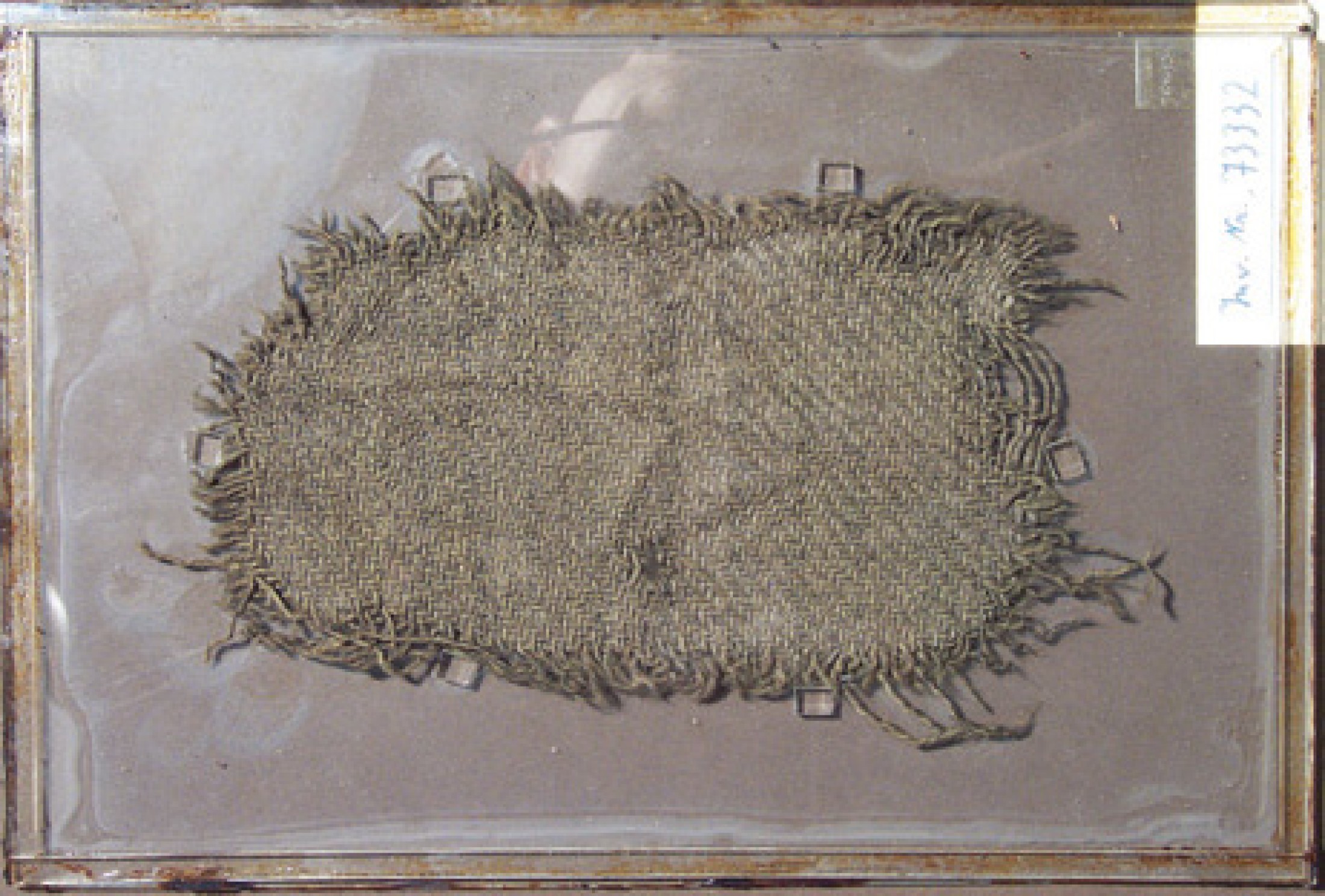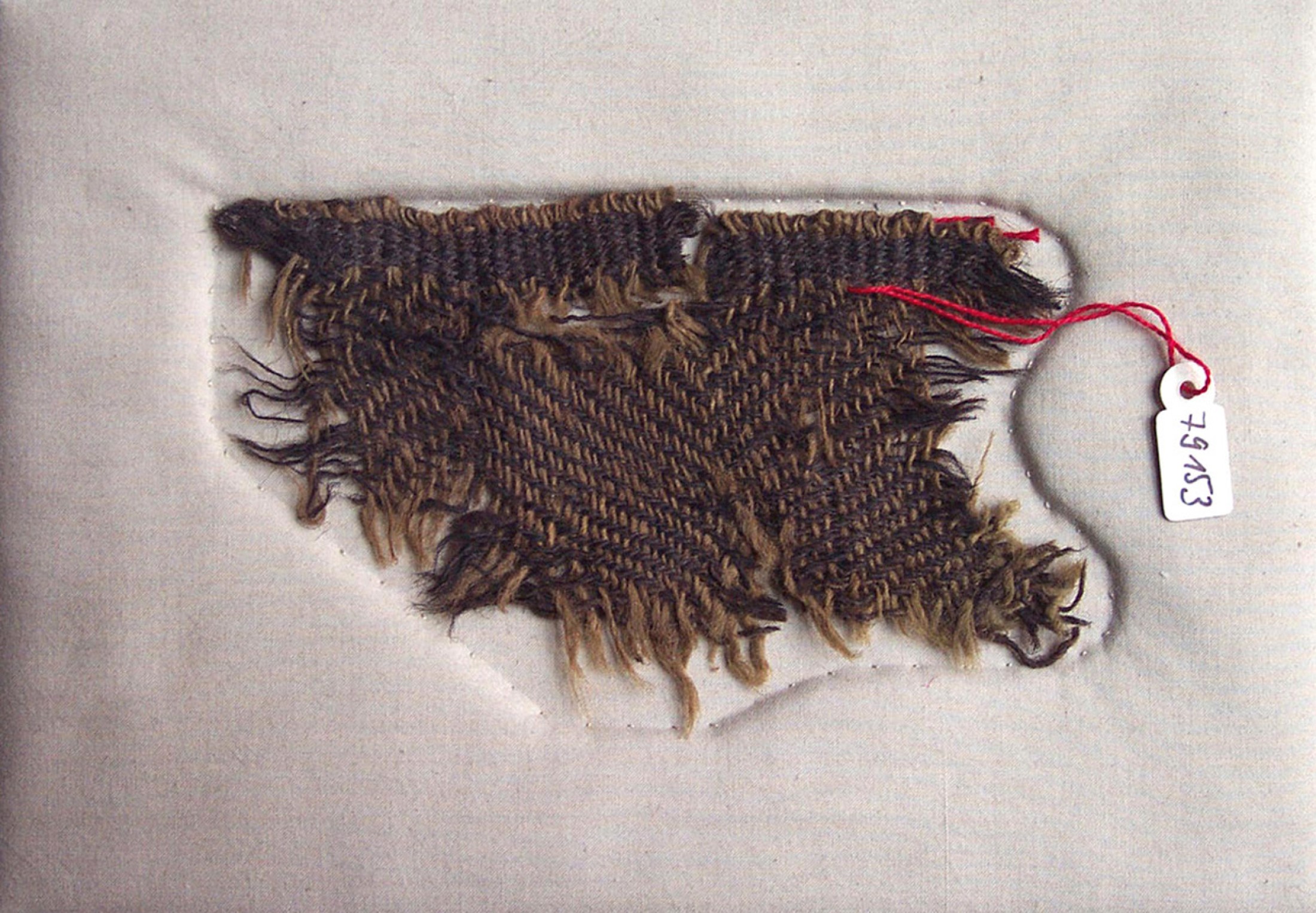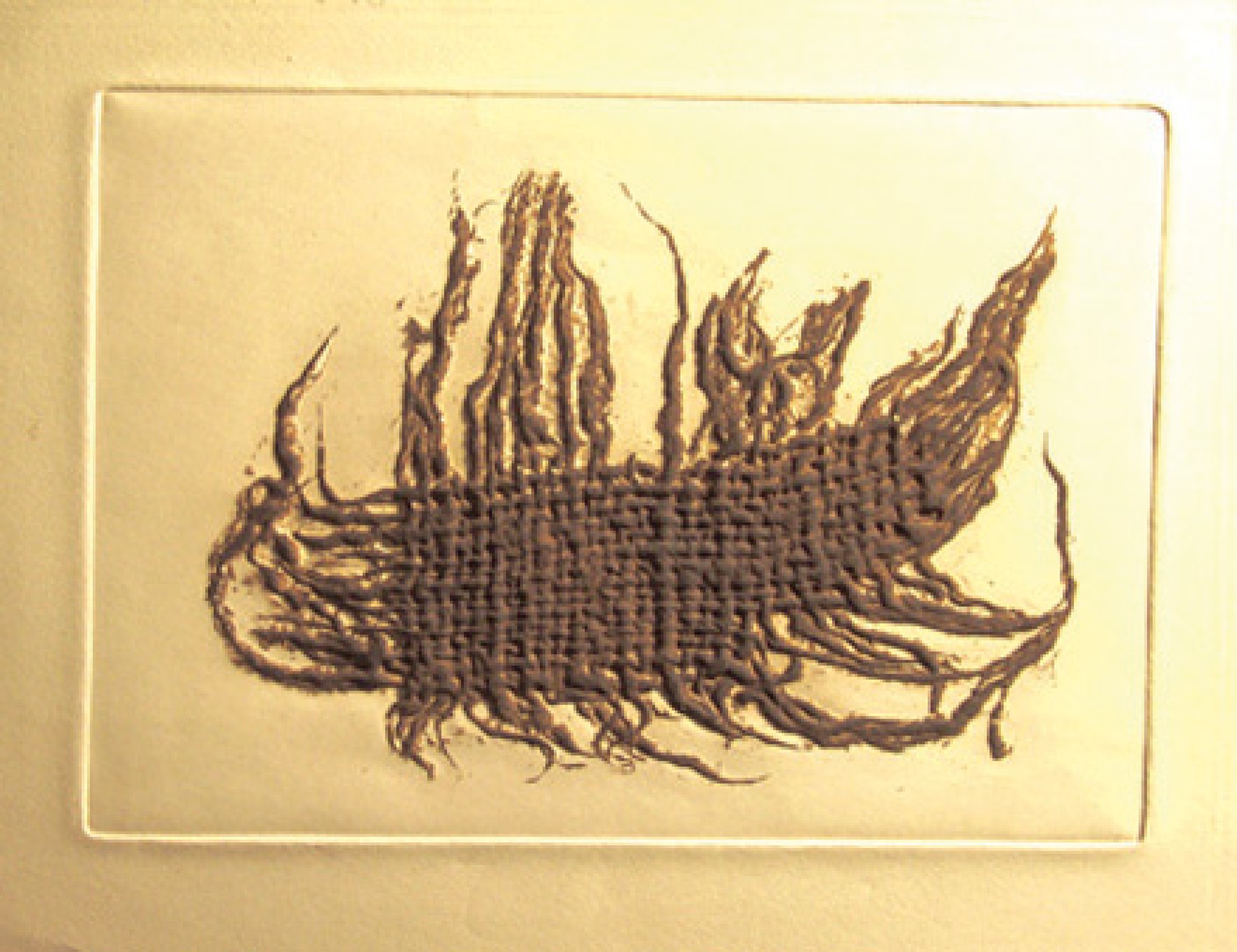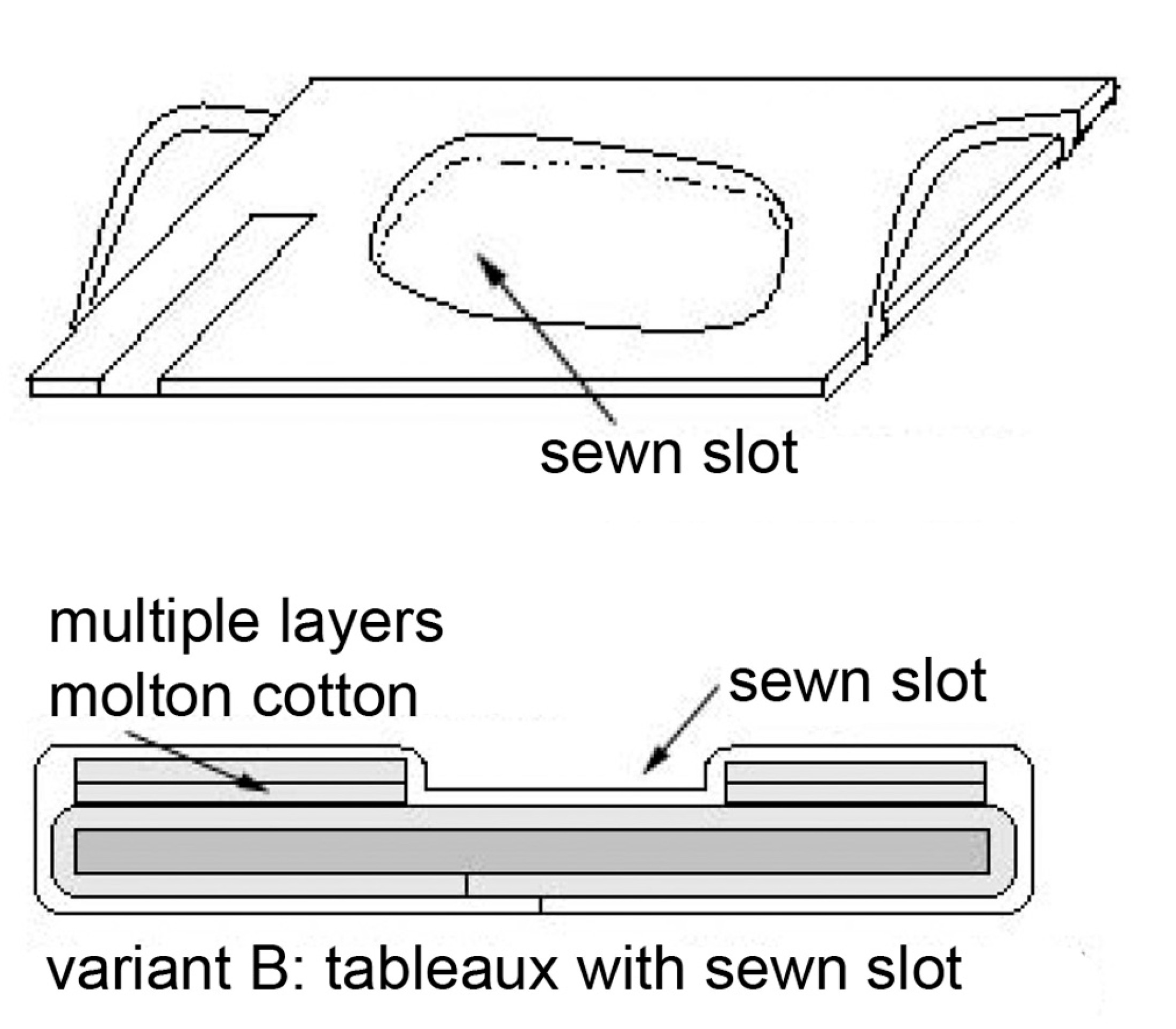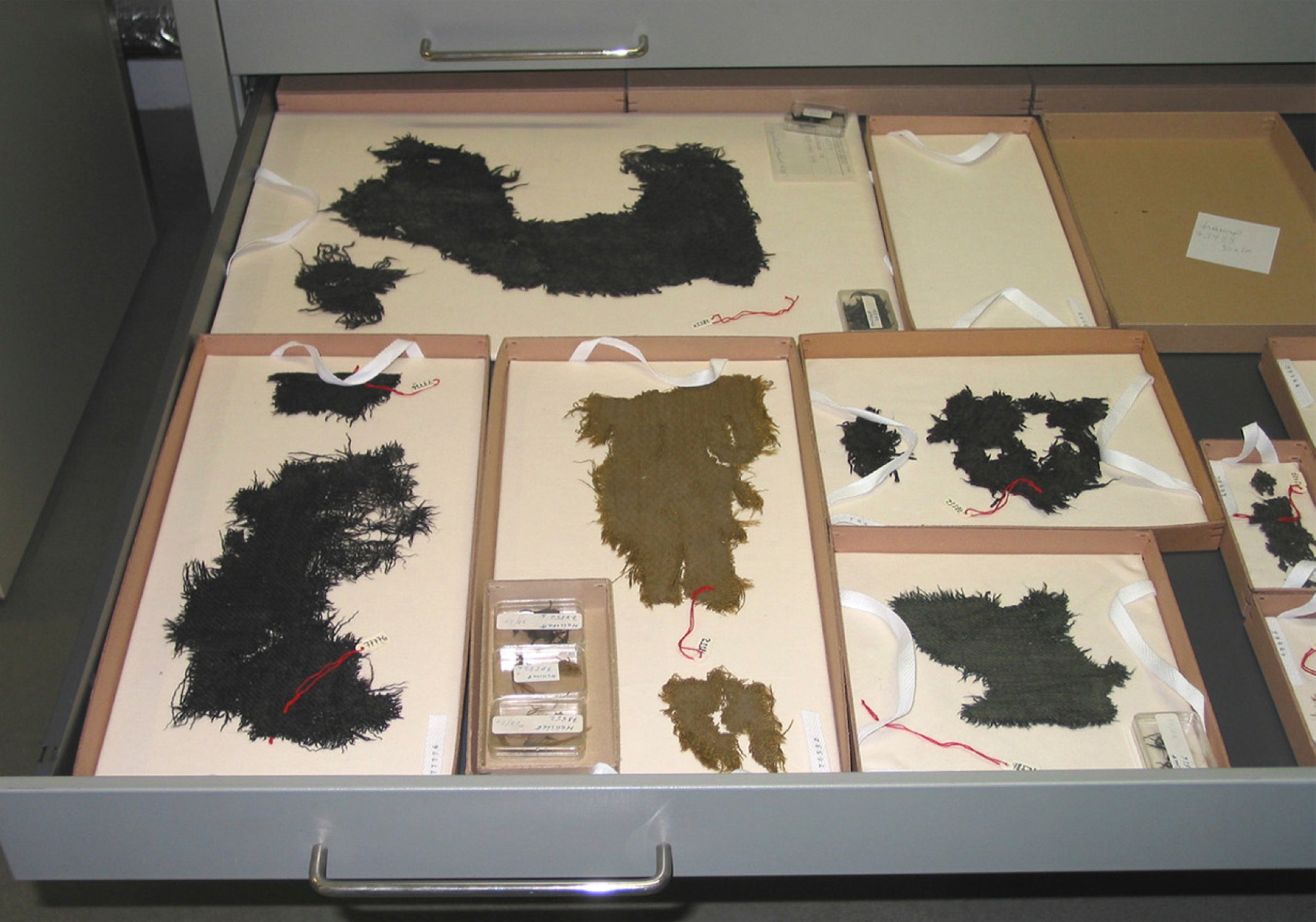Conservation and restoration of textiles found in the mines
Most of the invaluable textile finds made in the mines of Hallstatt are compacted into the rock and other mining debris (referred to as the Heidengebirge). In the past, a range of techniques were used in order to separate the textile remains from the rock. Different techniques have also been used over the last 160 years to store textiles found in Hallstatt. The methods used today to excavate, clean, transport and store finds are based on the results of research carried out by the NHM in collaboration with the Institute of Conservation Science at the University of Applied Arts Vienna.Treatment of textiles during early Hallstatt research
Conservation techniques 1960-1984
Treatment of finds after 1985
Research into new cleaning and transport measures
Storage of textiles 1968-2003
New storage concept
Treatment of textiles during early Hallstatt research
In the 19th and 20th century the textiles found in the mines were either moistened with water or left in the lumps of rock within which they had been discovered. At the start of the 20th century a number of moistened textile fragments were used to produce colored cardboard using a copy press (a common method at the time). There is also evidence that during restoration work carried out in the first half of the 20th century a number of textile fragments were treated with stabilizing agents.Conservation techniques 1960-1984
A number of old finds as well as those excavated between 1960 and 1984 have been conserved by Hans-Jürgen Hundt at the Romano-Germanic Central Museum. These materials were thoroughly washed. To clean the items placed on display, Hundt used normal washing liquid as well as a range of stabilizing agents. A pioneer in the field of textiles, Hundt developed new methods for conserving and storing materials. For example, he was the first person to display textiles between two sheets of glass, held in place by Plexiglas cubes, in order to protect the objects from dust.Treatment of finds after 1985
Since 1985 all textiles have been washed and rinsed with freshwater on site in Hallstatt in order to separate them from the compacted rock of the Heidengebirge. After being transported to the NHM, most pieces are cleaned under water for a second time using the water-jet technique introduced by Hundt.Research into new cleaning and transport measures
During the excavations in 2003 and 2004 a number of new methods for cleaning and transporting finds were developed by Carine Gengler as part of a diploma thesis completed in 2005 at the Institute of Conservation Science of the University of Applied Arts Vienna. Textiles - sewed into a protective net - must be cleaned in a wet state in order to remove the corrosive salt and other deposits. The textiles are then laid out while still wet and the threads are moved into their original position.Storage of textiles 1968-2003
Many different techniques have also been used to store textiles since the first finds made in 1846. In 1968 a number of finds were pinned to paper-coated boards for the permanent exhibition on show at the NHM. However, this technique (used until 2009) exposed them to an unstable climate and changing light conditions. Other finds are on display in glass cabinets in the corridor of the research department of the Salinen Austria in Hallstatt, where they are exposed to daylight and artificial light.Most of the finds not on display are in the NHM’s underground storage area. Until the 1980s the textiles were stored in the halls themselves, in wooden drawers underneath the display cabinets. After being treated by Hundt they were kept in a metal cupboard in the hallway of the restoration workshop. In 1998 they were moved, together with the cupboard, to the NHM’s climate-controlled underground storage area.
New storage concept
In 2003 Carine Gengler developed a new storage concept. According to this system, each textile fragment is mounted on a board with an individual inventory number. This board is used to store, display and transport the item. These boards are made of non-acidic, breathable museum cardboard with a soft layer of molleton and a top layer of cotton.(Groemer, K. – Reschreiter, H. – Loew, C.)

